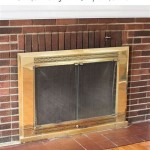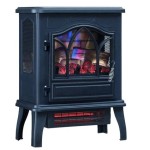Vented vs. Ventless Gas Fireplaces: Essential Differences to Consider
When enhancing your home's ambiance with the warmth and allure of a gas fireplace, understanding the key differences between vented and ventless models is crucial. Each type offers unique advantages and drawbacks, and choosing the right one for your needs is essential.
### Vented Gas FireplacesVented gas fireplaces are designed to exhaust combustion gases through a chimney or venting system. Key features of vented fireplaces include:
-Exhaust Ventilation:
Combustion gases, including carbon monoxide, are expelled outside the home through a dedicated vent. -Higher Efficiency:
Vented fireplaces release heat into the room while exhausting gases, providing efficient heating. -Safety:
The venting system ensures proper ventilation, minimizing the risk of gas buildup or carbon monoxide poisoning. -Fuel Source:
Vented fireplaces typically use natural gas or propane as fuel, requiring a gas line connection. ### Ventless Gas FireplacesVentless gas fireplaces do not require a venting system. Instead, they release combustion gases directly into the room. Key aspects to consider include:
-Convenience:
Ventless fireplaces eliminate the need for a chimney or venting system, offering greater flexibility and ease of installation. -Aesthetic Appeal:
Ventless fireplaces can be installed in any room without the need for unsightly vents or chimneys. -Fuel Source:
Ventless fireplaces primarily use propane or butane as fuel, requiring a small gas tank or connection. -Safety Concerns:
Ventless fireplaces release combustion gases into the room, which can affect indoor air quality and pose safety risks if not properly ventilated. ### Choosing the Right FireplaceThe decision between a vented or ventless gas fireplace depends on your specific needs and preferences. Consider the following factors:
-Ventilation:
Vented fireplaces are essential for homes with inadequate ventilation or where gas buildup could be a concern. -Efficiency:
Vented fireplaces provide higher efficiency by expelling heat and gases outside the home. -Safety:
Vented fireplaces offer better safety measures due to the efficient removal of combustion gases. -Convenience:
Ventless fireplaces offer greater convenience and installation flexibility. -Indoor Air Quality:
If indoor air quality is a priority, vented fireplaces are the recommended choice due to their superior ventilation. ### ConclusionUnderstanding the differences between vented and ventless gas fireplaces is vital to make an informed decision that meets your needs. Whether prioritizing efficiency, safety, convenience, or indoor air quality, carefully consider the key aspects outlined above. By choosing the right type of gas fireplace, you can enhance your home's ambiance and enjoy the warmth and comfort of a flickering flame for years to come.

Vented Vs Ventless Gas Logs What S The Difference

Gas Fireplaces Direct Vent Vs Free Fine Homebuilding

Vented Vs B Vent Direct Free Dixie S

Ventless Gas Fireplaces How Safe Are They Really Earlyexperts

Differences Between Ventless And Vented Fireplaces Factory Buys Direct

Vented Vs Ventless Gas Logs Differences How To Choose

Vented Vs Ventless Gas Fireplace Logs
.png?strip=all)
Vented Vs Ventless Gas Logs What S The Difference

How To Select And Install A Gas Fireplace Log Set Fireplaces Direct Learning Center

Vented Vs Ventless Gas Logs Woodlanddirect Com
Related Posts








